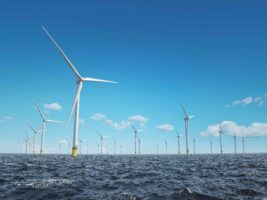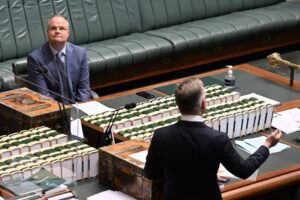The government says stamping the next-gen renewable energy certificates with emissions intensity data is too difficult, but technology is already available which gets consumers halfway there.
Software from Quinbrook Infrastructure Partners provides an hourly overview of energy-based carbon footprints, matching customers’ consumption with output at their contracted renewable electricity supplier.
It also includes the carbon impact of non-renewable energy used.
The technology, dubbed Quintrace, measures the carbon intensity of grid power purchases and creates an hourly picture of the net carbon impact of a facility.
Last week, the Clean Energy Investor Group called for Renewable Electricity Guarantee of Origin (REGO) certificates, the follow-on to Renewable Energy Target (RET) certifications, to show both emissions data for the generator and how much fossil fuel generation they displace.
In its submission on the federal government’s plans to introduce the REGO, the CEIG says despite issues around data – off-grid and remote systems may not be able to generate enough data to match their generation with what might otherwise have been used – being able to state the tangible benefit of renewable energy on a certificate would be a boost for building more generation and storage.
Avoiding greenwashing
From a consumer perspective, Quinbrook cofounder David Scaysbrook says this type of data prevents greenwashing.
“There is a typical mismatch between the times when the renewables projects they buy power from are generating compared to when their facilities are consuming power,” he says.
“It’s now critical to know the carbon intensity of the grid power being used to charge batteries before that stored energy is supplied to a customer. Companies must be able to prove and audit their carbon footprint reductions along with the need to meet increasingly stringent carbon reporting that presents huge and costly challenges.
“Knowing what your real and auditable footprint is to defend greenwashing claims and track genuine carbon impact is now an acute business need.”
Being able to track and match renewable energy use more accurately is replacing and becoming a more credible “greening” option than buying offsets, a statement from Quinbrook said.
Instead of using offsets – which are regularly hit with claims of scandal, fraud, or serious flaws in methodology – companies are beginning to look to more concrete ways in which they can measure carbon emissions reductions, and energy is one of the most straightforward options.
Tidal wave of greenwashing enforcement grows
Greenwashing, or giving a false or misleading view of a company’s environmental credentials, is in the spotlight.
Earlier this year the federal Senate set up an inquiry into greenwashing by Australian corporations to investigate the impacts on both consumers and the environment, and develop the legal and regulatory apparatus to stop it.
This followed a crackdown in June by the Australian Competition and Consumer Commission (ACCC) which will compel companies to back green claims with evidence, and by corporate cop the Australian Securities and Investments Commission which has been throwing the book at a range of industries from super funds to agricultural companies since last year.
Active Super, Vanguard and a South Australia fertiliser company are the latest to be accused of doing less than they say they are.
Into this heady environment, major energy consumers are beginning to demand real time verification of their renewable energy sources – to prevent being caught in the tidal wave of greenwashing enforcement.
They must also meet increasingly stringent carbon accounting and reporting regulations.
Quinbrooks’ James Allan says hourly matching of energy use to renewable energy projects means the carbon intensity of utility load, behind-the-meter renewable generators and utility and behind-the-meter battery storage is logged.
“For example, our portfolio company Energy Locals is using Quintrace to track the source of renewable supply meeting power demand at its many community energy sites across Sydney, Australia,” he says.
“Energy Locals can demonstrate that 32 per cent of power consumption at its Schofields Garden site so far this year has been met by onsite renewable energy on a 24/7 hourly basis, assisted by onsite battery storage. This rises to 79 per cent hourly renewable supply when including offsite supply under PPA. That is a game changer.”










